AI Isn't My Career Change. It's My Career Culmination
People scan my LinkedIn and think they can connect the dots.
“Marketing.”
“Business development.”
“Consulting”
What they miss is the pattern. For twenty five years I have stepped into messy, inefficient systems and made them work for the humans who actually have to use them.
My titles changed. The mission did not.
The pattern started on the road
In the early 2000s I was traveling the country teaching small business owners how to get online. Hotel ballrooms in New York, Boston, Chicago, Detroit, Dallas. Big cities. Small towns. Rooms packed with creators, tradespeople, and shop owners who had never sold a thing outside their ZIP code.
There was no Shopify. No Squarespace. We built workable sites without writing code, set up merchant accounts, and made phones ring. The ah‑ha was never the tool. It was the moment people realized they could actually use it.
That is when I learned my favorite puzzle. Find the key that unlocks the system so people can move faster, think clearer, and innovate uniquely.
Scaling the blueprint
Later, at Enterprise Florida, I helped lead the deployment of the organization’s first statewide CRM across all 67 counties. This was not a software install. It was transformation at scale with legacy processes, strict reporting requirements, and hundreds of stakeholders with wildly different levels of digital fluency.
At the same time I was earning an MBA focused on Management Information Systems and Marketing. Theory met reality every day. The lesson that stuck was simple. Tools do not solve problems in isolation. Systems do when they are designed around the people who use them.
Same mission, different arenas
Across economic development, energy, and consulting, I kept seeing the same three signals.
Talented teams stuck in outdated workflows
Valuable knowledge trapped in silos
Potential lost because the system was built for dashboards instead of people
Leaders brought me in because I could spot the pattern and bridge the gap. I translate. I simplify. I make technology carry weight so people can do the work only people can do.
Why AI Fits Me Like A Glove
In 2020 I received early beta-tester access to OpenAI’s platform long before ChatGPT went public. I recognized the same kind of leverage I have chased my whole career. I did not obsess over prompts. I treated AI like a partner.
My approach did not change.
Meet people where they are
Get crystal clear on the outcome
Build systems that protect time and attention for the work only they can do
That is the heartbeat of ThoughtLeap.
What this looks like in the wild
Leaders bring me chaos. We turn it into capacity.
Executive prep that used to take six hours now takes fifteen minutes
Proposal development that took weeks now takes hours
Teams report 30 to 40 percent efficiency gains inside 30 days
In targeted workflows we have recorded performance lifts of 200 percent
None of this comes from replacing people. It comes from building systems that make good judgment easier and deep work possible.
The ThoughtLeap method
Clarity. Map the friction, define the finish line, and design backward from the outcome.
Confidence. Build fluency through supported implementation. Real tasks. Real feedback. Steady wins.
Capacity. Scale what works across the team with repeatable protocols and feedback loops.
This is change people can feel. Less decision fatigue. Fewer context switches. More time for the right work.
The point
AI is not a hard left turn in my career. It is the payoff of a long pattern. I build human systems that scale. Today I do it with AI at my side.
If you want to spend less time fighting your tools and more time doing your best work, let’s talk.
